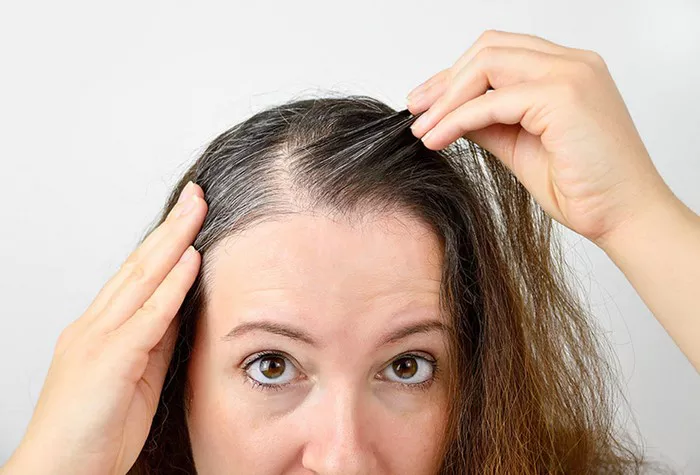Hair loss is a common concern for both men and women, with a myriad of factors contributing to this issue. From genetics to stress, diet, and hormonal changes, the causes of hair loss are diverse and complex. However, one promising approach to combating hair loss is stimulating hair follicles. By promoting healthy follicle function, individuals may experience thicker, fuller hair growth. But what exactly should one use to stimulate hair follicles effectively? In this article, we delve into the science behind hair follicle stimulation and explore various methods and products that can aid in this endeavor.
Understanding Hair Follicles:
Before delving into methods of stimulation, it’s essential to grasp the basics of hair follicles. Hair follicles are tiny structures located in the skin that produce hair. Each follicle undergoes cycles of growth, rest, and shedding, with various factors influencing these cycles. The health of the hair follicle is crucial for maintaining a full and vibrant head of hair.
Factors Affecting Hair Follicle Health:
Several factors can impact the health of hair follicles, leading to issues such as thinning hair or hair loss. These factors include:
1. Genetics: Family history plays a significant role in determining hair loss patterns.
2. Hormonal Changes: Fluctuations in hormones, such as those occurring during pregnancy or menopause, can affect hair growth.
3. Nutritional Deficiencies: Inadequate intake of essential vitamins and minerals can impair hair follicle function.
4. Stress: Chronic stress can disrupt the hair growth cycle and lead to hair loss.
5. Environmental Factors: Exposure to pollutants and UV radiation can damage hair follicles.
Methods of Stimulating Hair Follicles:
Fortunately, several methods can help stimulate hair follicles and promote healthy hair growth. These methods include both topical treatments and lifestyle changes. Let’s explore some of the most effective options:
1. Topical Treatments:
a. Minoxidil: Minoxidil, commonly known as Rogaine, is a topical medication approved by the FDA for treating hair loss. It works by widening hair follicles and prolonging the growth phase of the hair cycle.
b. Essential Oils: Certain essential oils, such as rosemary oil, peppermint oil, and lavender oil, have been shown to promote hair growth and stimulate follicles when applied topically. These oils can be diluted with a carrier oil and massaged into the scalp.
c. Hair Growth Serums: Over-the-counter hair growth serums often contain ingredients like peptides, vitamins, and antioxidants that nourish the scalp and encourage hair follicle activity.
2. Nutritional Supplements:
a. Biotin: Biotin, also known as vitamin B7, is essential for maintaining healthy hair, skin, and nails. Supplementing with biotin can support hair follicle function and promote stronger, thicker hair.
b. Omega-3 Fatty Acids: Omega-3 fatty acids found in fish oil and flaxseed oil can help reduce inflammation and improve hair follicle health. Adding these supplements to your diet may promote hair growth.
3. Scalp Massage:
Massaging the scalp can increase blood flow to the hair follicles, delivering essential nutrients and oxygen. Additionally, scalp massage can help reduce stress levels, which can contribute to hair loss.
4. Low-Level Laser Therapy (LLLT):
LLLT, also known as red light therapy, has been shown to stimulate hair follicles and promote hair growth. Devices such as laser combs or helmets emit low-level laser light, which penetrates the scalp and stimulates cellular activity.
5. Prescription Medications:
In addition to minoxidil, prescription medications such as finasteride (Propecia) may be prescribed by a healthcare professional to treat hair loss. Finasteride works by blocking the conversion of testosterone to dihydrotestosterone (DHT), a hormone that can shrink hair follicles and lead to baldness.
6. Healthy Lifestyle Habits:
Adopting a healthy lifestyle can also support hair follicle health. This includes eating a balanced diet rich in vitamins, minerals, and protein, staying hydrated, managing stress levels, and avoiding excessive heat styling and chemical treatments.
Conclusion:
Stimulating hair follicles is a key strategy in combating hair loss and promoting healthy hair growth. By understanding the factors that influence follicle health and implementing effective methods of stimulation, individuals can improve the appearance and thickness of their hair. Whether through topical treatments, nutritional supplements, scalp massage, or lifestyle changes, there are numerous options available to support hair follicle function and achieve optimal hair health. Consulting with a dermatologist or healthcare professional can help determine the most suitable approach for addressing individual hair loss concerns.


